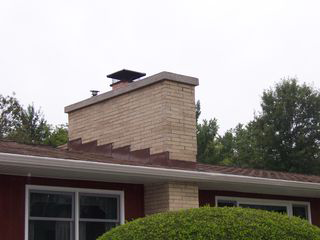
by blogediter | Aug 3, 2018 | Chimney Problems, Gas Logs
Downstairs fireplace
Q: Jason, I live in a main-floor condo with one upstairs neighbor. We have separate chimneys that are contained in one wood encasement. When my neighbor is burning a fire in his fireplace I have a strong smoke smell in my condo. My best guess is that the smoke is getting in through the top of the chimney. Is the seal on a Chimney Balloon tight enough to prevent this from happening?- MH
A: Dear MH, Maureen, This is a classic case of smoke crossover from one chimney to the other and it is a very common issue especially in apartments and condos, but it happens in homes with more than one chimney as well.
The answer to your question is, Yes, the Chimney Balloon will stop the smoke and odor from entering your home through the chimney. Your condo is “breathing in” through the chimney (which is often the path of least resistance for air entry into a home). And your neighbor’s condo is outputting smoke right next to your chimney. After putting in a tight-fitting Chimney Balloon your home will no longer be taking in air through the chimney. The air will find another entry point that is easier to draw through like a window or door jamb. This change of entry point will prevent the smoke from entering your condo. – Jason
Followup:
Q: Jason, I figured an update might help someone unsure if this product works. I received and installed my Chimney Balloon a week ago and it has made a drastic difference! I am no longer smoked out! What a relief! Because my chimney was very small(9″ round),(and my damper door was angled in such a way that it was impossible to get my arm around it)I had a friend come over and help me remove the damper door, position the Chimney Balloon, and then reattach the damper. I am so glad I did. Thank you!- MH
A: Dear MH, Sometimes the damper hardware can be very difficult to contend with. I’m glad you applied your ingenuity to get past the troublesome damper hardware to solve the smoke chimney crossover problem. As you found the Chimney Balloon will seal the chimney flue tightly so the home will not “breath” through the chimney anymore and take in the other chimneys smoke. – Jason
by blogediter | Jul 30, 2018 | Gas Logs
Q: Jason, I am looking to dress up my fireplace with a hearth fender, and maybe some decorative iron hardware. – RC
A: Dear RC, There is a new company on the online scene that sells gas log and fireplace adornments. They are called Gas Log Station and they offer fireplace screens, andirons, grates, accessories and hearth fenders for gas log set ups.
I would encourage you to get some images from a magazine of the look you are going for. I am a fan of the British Traditional look with the fireplace bumpers and andirons. – Jason
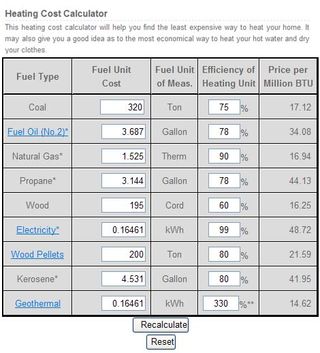
by blogediter | Jul 27, 2018 | Chimney Plugs, Gas Logs
Cost of using that fuel
If you are planning to buy a corn or pellet burner or replace your heating oil or natural gas furnace you should visit this heating cost calculator first at http://www.nhclimateaudit.org/calculators.php
this calculator gives you side by side comparisons to e most common heating fuels and lets you know how to get the most bang for your BTU. You simply enter the cost of each of the fuels available in your area. (Below is a sample of fuel costs for my area of Wisconsin) and it will let you know the cost of using that fuel. (Below is a screenshot of the calculator)
This chart offers an unbiased “apples to apples” comparison of fuels. It is well worth exploring before you put many thousands of dollars into a furnace or heating fuel change.
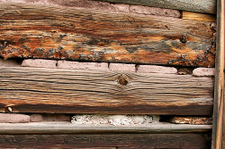
by blogediter | Jun 25, 2018 | Gas Logs
Log wall
Q: Jason, I live in Tennessee, in a restored log home from the very early 1800s. I have a number of ventless logs inside of chimneys (which were originally wood burning.) We use our ventless logs during the winter to heat the rooms we’re in. (The house is 6000 square feet, and keeping the whole thing climate controlled seems wasteful, considering how poor logs are as insulators…) I want to figure out some way to keep more of the heat from the ventless logs in. Is the right thing to get one of your Chimney Balloons, some sort of heat reflector, a blower fan, or to stop being a cheapskate and spend the 700 a month it takes to heat the whole house if we simply do things “the normal way” with the central H/AC. – ER
A: Dear ER, Thank you for your interest in the Chimney Balloon. In order to answer your question well I think i need to clarify with you that you do in fact have vent free gas logs. If you have vent-free gas logs you would have no chimney at all in the fireplace. The vent free variety of fireplace is usually just a firebox in the wall with a heat disapator on the top of the fire box. If this is in fact what you have, then you have no need for a Chimney Balloon because you have no chimney. If you have a vented gas log then you do have a chimney in your fireplace and it is likely that the damper has been clipped open or is otherwise disabled due to current code regarding gas logs. In this case a Chimney Balloon will help you quite a bit. When a vented gas fireplace is not in use, its open damper will suck the heat right out of the room due to the air stack effect in your home, especially in historacle log construction like your home. As far as heating your home goes. Right now it sounds like you are practicing zone heating. This can be very effective way of cost savings in a home your size (6000 square feet). I hate to say this…but $700 per month is actually a resonable amount to pay in the winter months to heat this size of area with a traditional HVAC system. If there are not many of you living in your home you may find zone heating is the way to go. I am for it as long as it is done safely and makes your home as usable as it can be for your needs. I would encourage you to have an energy audit of your home (if you havent already) as a trained professional in insulation would be able to direct you to even greater savings, Jason
Q: Thanks for the reply. Here is where it gets weird. In the 6 fireplaces in my home, there *used* to be standard issue wood fires. Then they were replaced by vented gas logs in the 70s. In the very late 90s early 2ks, they replaced all of the vented logs with *ventless* logs. So I have 6 fireplaces with ventless logs in my house 🙂 Actual fireplaces, with chimneys. So, given *that*, what do you think is the right “plan A”? 🙂 Thanks! – ER
A: OK, well that clears things up a bit. Since you do have chimneys over these “ventless” gas logs then you can use a Chimney Balloon to plug these fireplace chimneys. The key is that you have to remove the Chimney Balloon from the chimney before you light that particular fireplace. This is particularly important to note if you are used to just firing up your gas logs without opening a damper. A Chimney Balloon is deigned to burst if you light a fire under it, and it doesnt matter if it is a vented or vent free fire. You have a unique situation here, but with a home that is 200 years old I bet you have a lot of unique situations with your home. Im sure it has a lot of character and has had many owners over it life and each owner has made interesting changes im sure. If I can be of further assistance please let me know – Jason
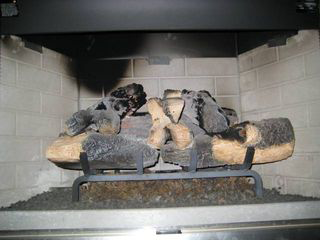
by blogediter | Mar 7, 2018 | Gas Logs
Ventless gas logs
Q: Jason, Vent-less Gas logs are appealing to me because they put all of their heat into the house and are efficient. However, they also concern me because they also put all of their combustion gasses into the room. Wouldn’t this cause high levels of CO and CO2.
I could opt to put in vented gas logs since I am installing them in a wood fireplace that already has a chimney and flue, but the efficiency will not be there since most of the heat will go up the flue with a vented unit. What is your opinion? – RW
A: Dear RW, You have stumbled upon a debate that has raged in the hearth industry for decades. Before 1980 Vent-less gas logs were undeniably dangerous, but there have been improvements since then. Ventless gas log manufacturers swear by their newer products and say they are safe and do not elevate CO or CO2 levels. They say they even build in CO sensors that will shut the vent free heating device off if it malfunctions and causes a CO backup.
On the other side, you have the EPA and health professionals that say they have nothing but trouble with vent free gas logs since they introduce high levels of water vapor and generally decrease air quality in homes. They have not really been able to point to solid evidence of this, but rather just state it from experience.
The New Impartial Study on Vent-less Gas Logs:
The University of IL (Urbana/Champagne) recently introduced results of a study they conducted on 30 homes over a 3 years period to see how vent-free gas appliances do affect the homes air quality. The complete study is available online, but I will give you a brief summary of what I found most interesting about it since I saw a presentation on this study at the ACI show in Kansas City. It was presented by Paul F., one of the main researchers to the U of IL study.
- NO2 is the gas most likely to exceed acceptable levels when operating a vent free device.
- The safety shutoff sensor on vent free units does not sense for NO2 levels.
- CO occasionally exceeded the 8hr maximum in tests where they were a long continuous run time or in a tightly enclosed space.
- Relative humidity is more likely to be a problem further from the fireplace since those areas will be cooler.
- The EPA says “Avoid installing unvented (or “vent-free”) space or water heating appliances“
Now we all know that Carbon Monoxide (CO) is not something we want in our homes but (NO2) Nitrogen Dioxide was new to me so I had to look up the side effects. Quite frankly, I found the side effects to be pretty scary.
The researcher that did this presentation was very impartial and factual in his presentation. However, at the Q&A session of the audience members put him on the spot and asked: “Would you personally install a vent free heating appliance in your home?” You could tell that this question made Paul nervous, but he answered truthfully and addressed the fact that the audience member was only asking his personal opinion and not anything related to the research (this was very wise to point out). His answer was “No, I would not.”
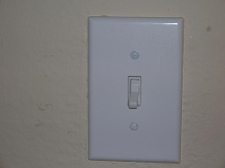
by blogediter | Feb 19, 2018 | Gas Logs
Light Switch
Q: Jason, I have a gas fireplace that is supposed to light when the light switch is flipped to the ON position. It worked fine for the first 8 years. but now it won’t light when the switch is activated. In order to light it, I have to go to the fireplace to push the red ignitor button several times.
The pilot is burning OK, and the fire burns fine if I light it with the red ignitor. Is the thermocouple bad? After the fireplace has been burning for a while, I can flip the switch and it will re-light ok, but if I start it cold I am back to using the red button again. – GF
A: GF, Over the last 8 years the copper contacts on your standard wall switch have corroded a bit. In other words, they have that crusty green copper corrosion junk on the contacts. Since this system works on a milliamp signal it is very sensitive to variations or resistance. You can either remove the switch from the wall socket and clean the contacts or purchase a gold or mercury contact wall switch that will not corrode over time.




